While I was playing on my phone, I noticed that my UISegmentedControl was not very responsive. It would take 2 or more tries to make my taps register. So I decided to run my app in Simulator to more precisely probe what was wrong. By clicking dozens of times with my mouse, I determined that the top 25% of the UISegmentedControl does not respond (the portion is highlighted in red with Photoshop in the screenshot below). I am not aware of any invisible UIView that could be blocking it. Do you know how to make the entire control tappable?

self.segmentedControl = [[UISegmentedControl alloc] initWithItems:[NSArray arrayWithObjects:@"Uno", @"Dos", nil]];
self.segmentedControl.selectedSegmentIndex = 0;
[self.segmentedControl addTarget:self action:@selector(segmentedControlChanged:) forControlEvents:UIControlEventValueChanged];
self.segmentedControl.height = 32.0;
self.segmentedControl.width = 310.0;
self.segmentedControl.segmentedControlStyle = UISegmentedControlStyleBar;
self.segmentedControl.tintColor = [UIColor colorWithWhite:0.9 alpha:1.0];
self.segmentedControl.autoresizingMask = UIViewAutoresizingFlexibleLeftMargin | UIViewAutoresizingFlexibleRightMargin;
UIView* toolbar = [[UIView alloc] initWithFrame:CGRectMake(0, 0, self.view.width, HEADER_HEIGHT)];
toolbar.autoresizingMask = UIViewAutoresizingFlexibleWidth;
CAGradientLayer *gradient = [CAGradientLayer layer];
gradient.frame = CGRectMake(
toolbar.bounds.origin.x,
toolbar.bounds.origin.y,
// * 2 for enough slack when iPad rotates
toolbar.bounds.size.width * 2,
toolbar.bounds.size.height
);
gradient.colors = [NSArray arrayWithObjects:
(id)[[UIColor whiteColor] CGColor],
(id)[[UIColor
colorWithWhite:0.8
alpha:1.0
] CGColor
],
nil
];
[toolbar.layer insertSublayer:gradient atIndex:0];
toolbar.backgroundColor = [UIColor navigationBarShadowColor];
[toolbar addSubview:self.segmentedControl];
UIView* border = [[UIView alloc] initWithFrame:CGRectMake(0, HEADER_HEIGHT - 1, toolbar.width, 1)];
border.autoresizingMask = UIViewAutoresizingFlexibleWidth | UIViewAutoresizingFlexibleTopMargin;
border.backgroundColor = [UIColor colorWithWhite:0.7 alpha:1.0];
border.autoresizingMask = UIViewAutoresizingFlexibleWidth;
[toolbar addSubview:border];
[self.segmentedControl centerInParent];
self.tableView.tableHeaderView = toolbar;